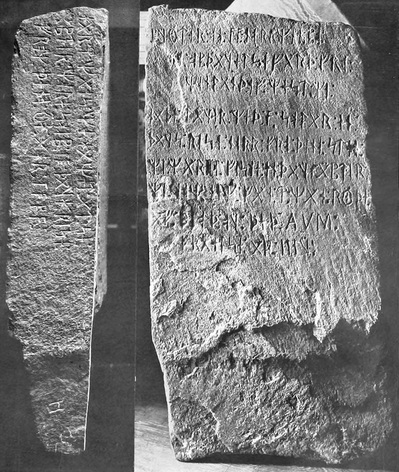
Because of South Carolina law (I was required to settle on texts for the course some time ago), I'm locked into using Wolter's Hooked X book. We'll use that book and other sources to understand arguments supporting the claim that the KRS is a genuine medieval artifact dating to 1362. Each guest that I've invited will address a different aspect of that claim.
The Geology and Age of the Kensington Rune Stone
Dr. Harold Edwards will be joining the class (via Skype) to discuss the geology of the KRS as it relates to interpretations of the age of the inscription. Edwards, a professional geologist who works in Minnesota, is currently preparing a paper on the geology of the KRS. He has written lengthy critiques of Wolter's conclusions about the weathering of the KRS on Jason Colavito's blog (e.g., here), and has made comments on my blog in the past. Edwards does not accept the KRS as a medieval artifact on the basis of its geology.
The Runes
Dr. Henrik Williams will be talking to the class (via Skype) about the linguistics of the KRS. Williams is an expert in Germanic runes who has made extensive study of the KRS inscription. You can see a brief interview with Williams in this podcast from the Minnesota Historical Society. Williams does not accept the KRS as a medieval artifact on the basis of its runology.
The Kensington Rune Stone as a Modern Masonic Creation
Finally, Paul Stewart will speak to the class about his ideas of who created the KRS and why. In his 2013 book The Enigmatist, Stewart argued that the KRS was neither a genuine medieval artifact nor an intentional hoax, concluding that it was probably created by Freemasons in the 1800's (perhaps by the Cryptic Rite in 1880). I'm hoping that Stewart will be able to visit the class in person.


 RSS Feed
RSS Feed
